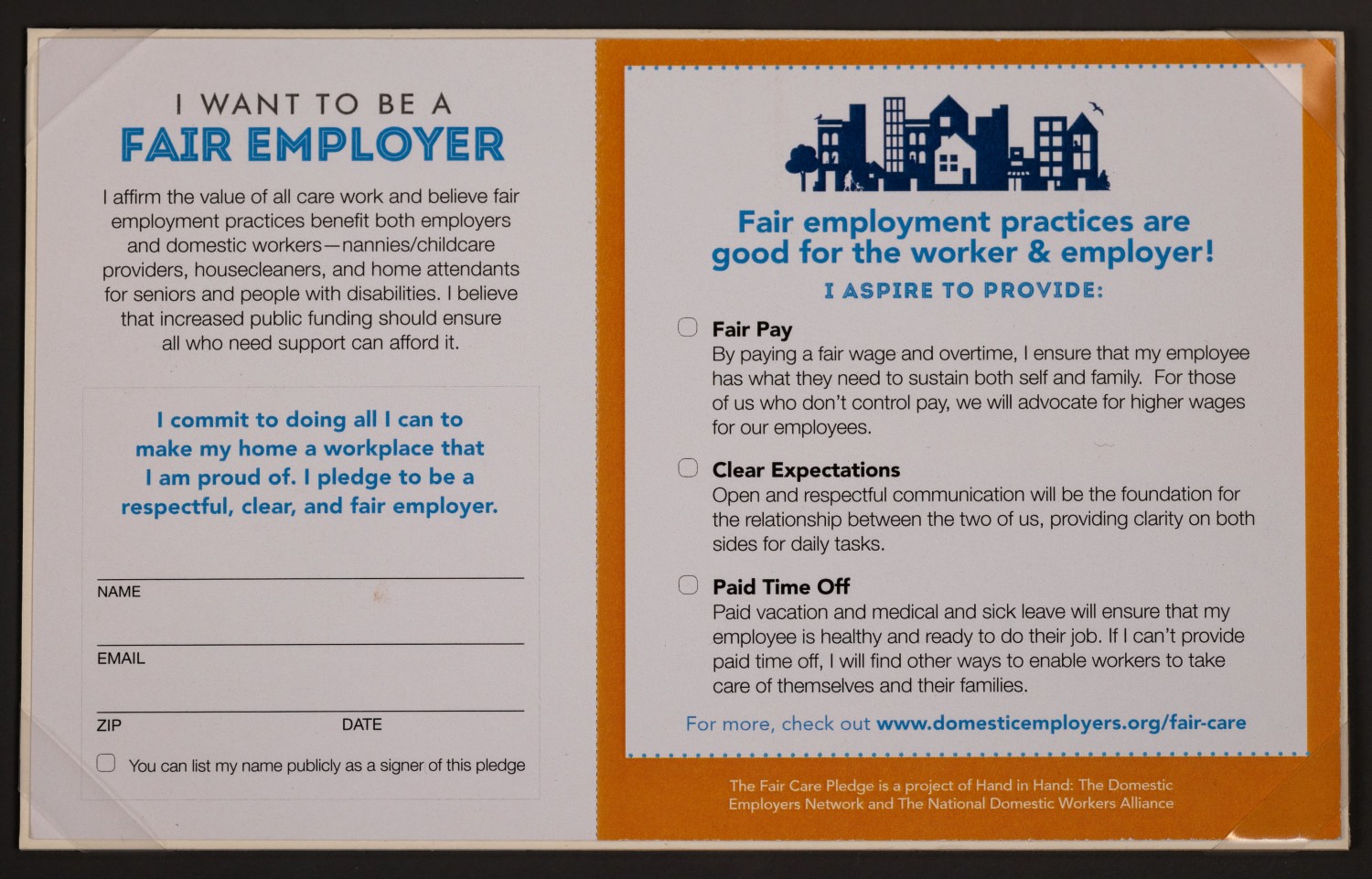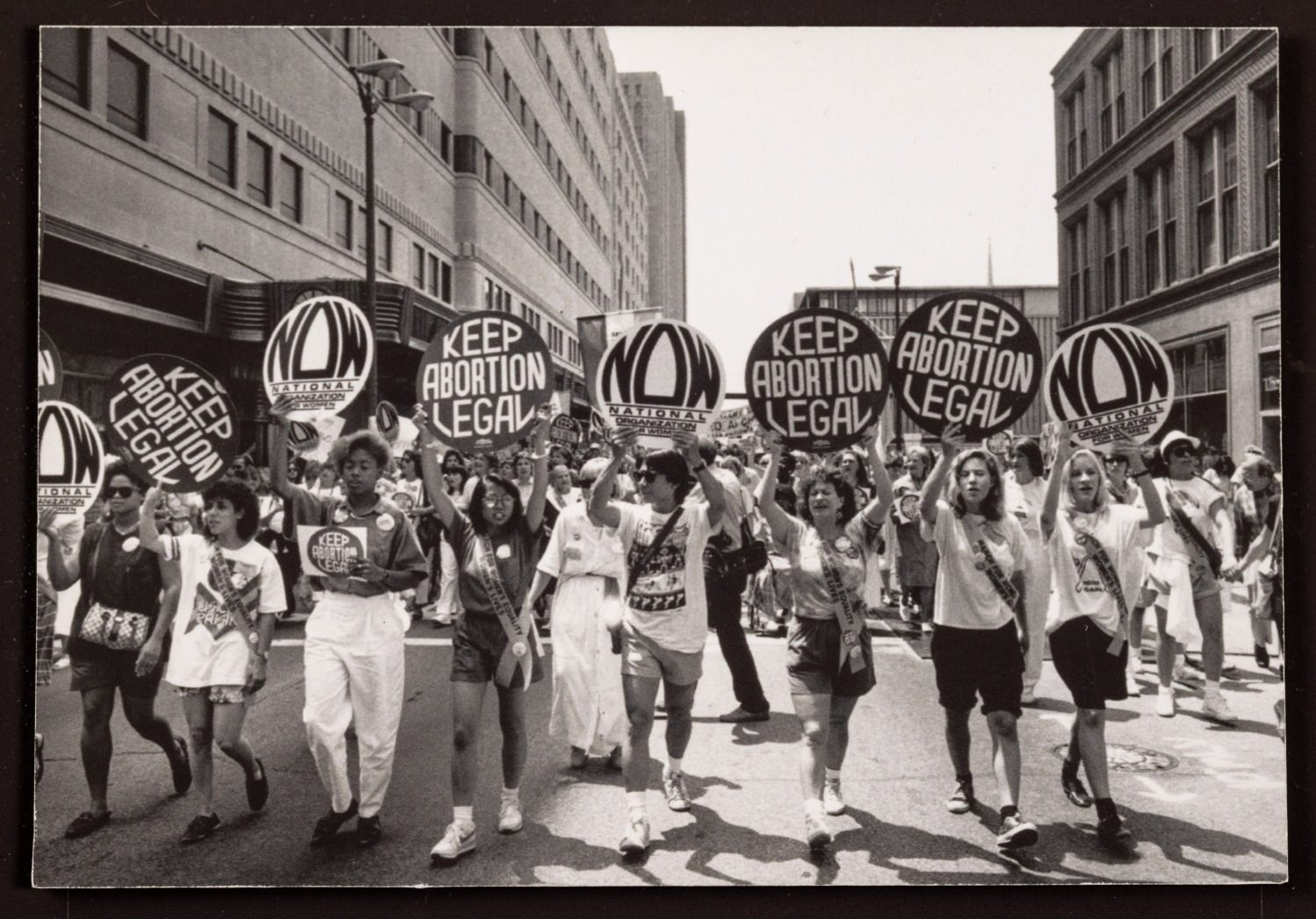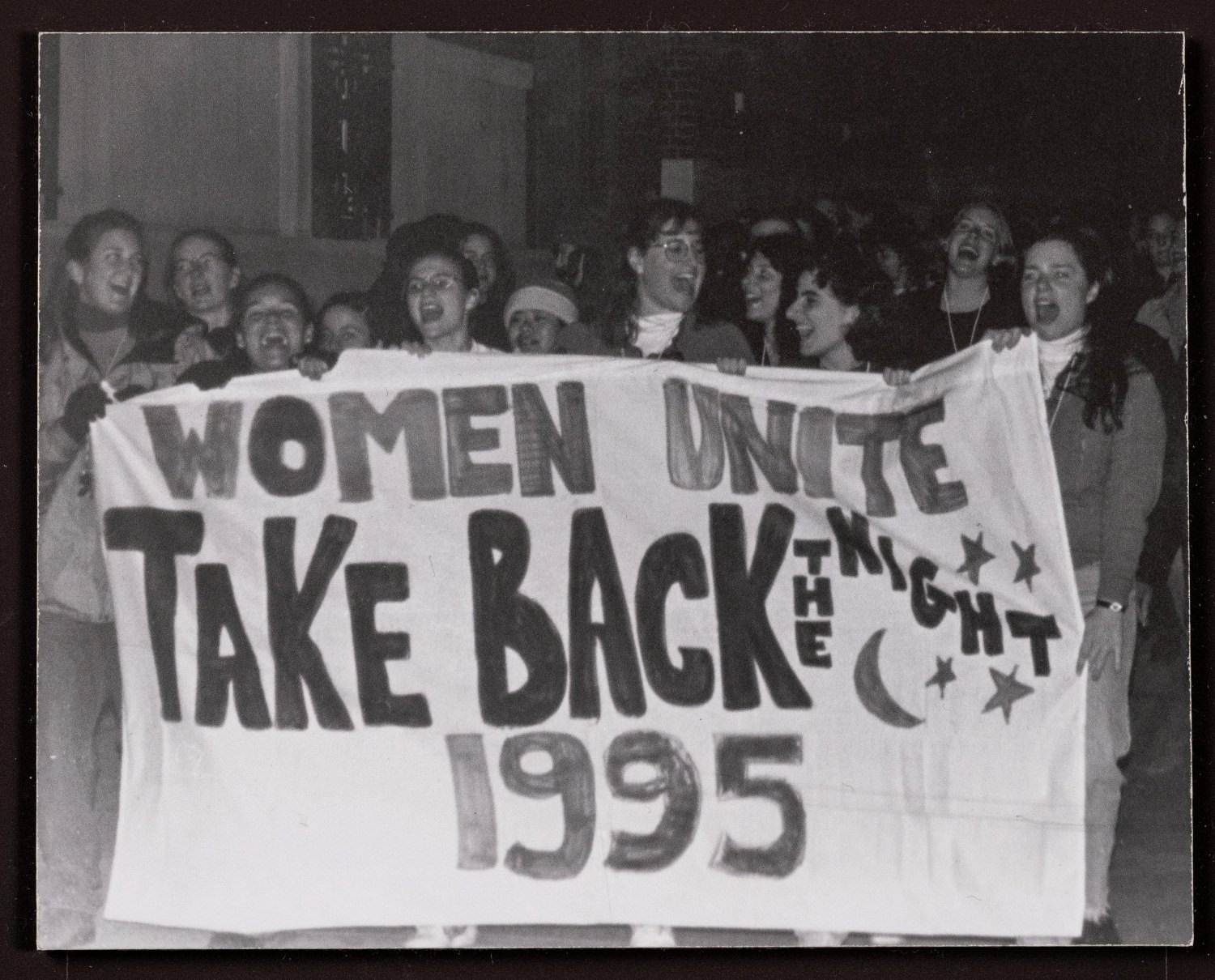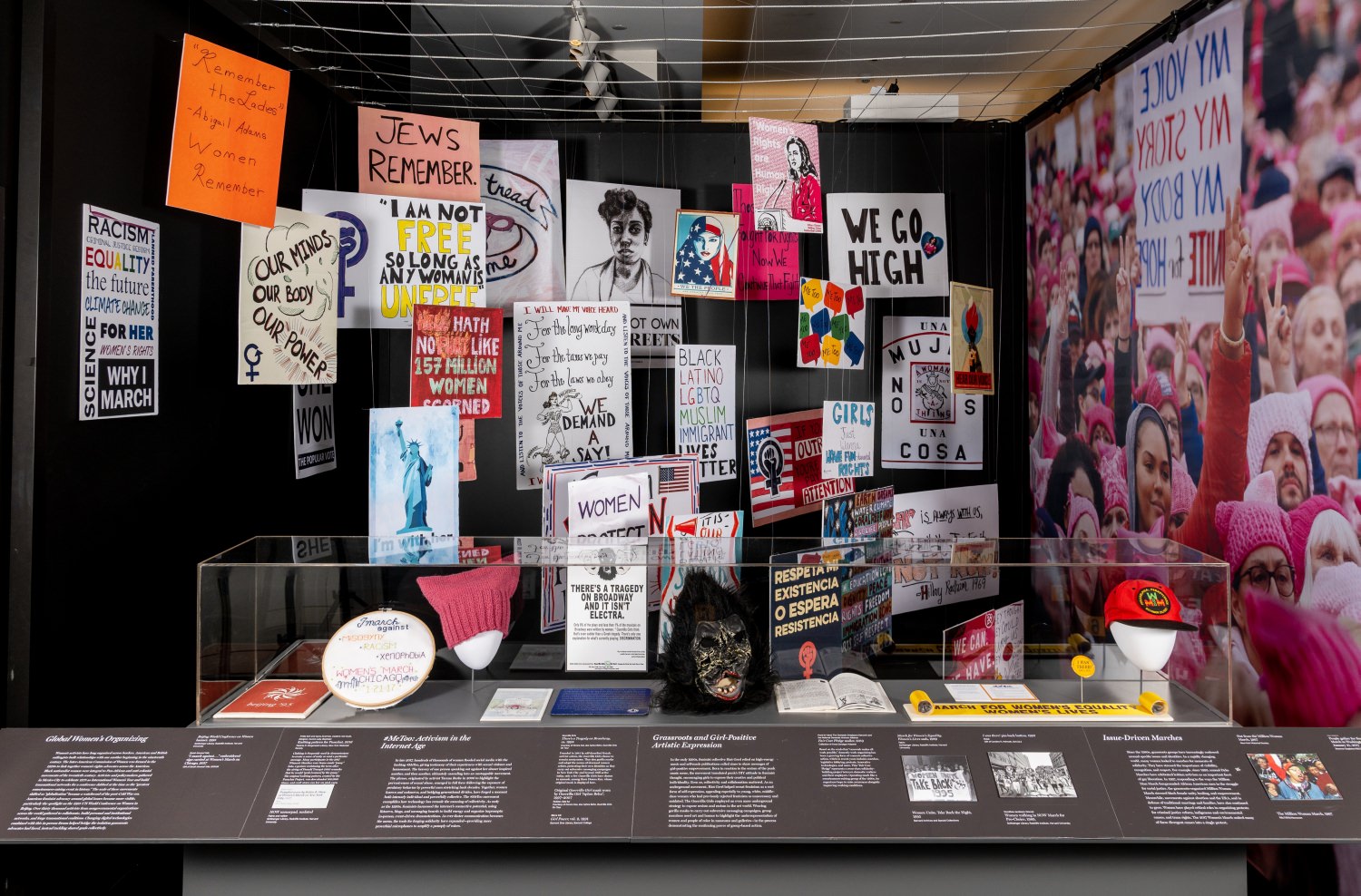
click for 360 tour

March
for Women's Equality, Women's Lives sash, 1989
Fabric
Schlesinger
Library, Radcliffe Institute, Harvard University

Hand in Hand: The Domestic Employers
Network and the National Domestic Workers Alliance
Fair Care Pledge mailer, 2019
Collection of Anna Danziger Halperin
Based on the
credo that “carework makes all work possible,” domestic work organizing has
been a growing form of women’s collective action, which in recent years
includes marches, legislative lobbying, protests, innovative technologies, and
more. This “Fair Care Pledge” represents a cross-class solidarity-building
project between domestic workers and their employers. Operating much like a
consciousness-raising group of the 1960s, its organizers hope to raise
awareness alongside improving working conditions.

Dorothea
Jacobson-Wenzel
Women walking in NOW
March for Pro-Choice, 1989
Schlesinger Library, Radcliffe Institute,
Harvard University

Women Unite, Take Back the Night, 1995
Barnard
Archives and Special Collections

#MeToo:
Activism
in the Internet Age
In late 2017, hundreds of thousands of women flooded social media with the hashtag #MeToo, giving testimony of their experiences with sexual violence and harassment. The bravery of one person speaking out against her abuser inspired another, and then another, ultimately cascading into an unstoppable movement. The phrase, originated by activist Tarana Burke in 2006 to highlight the pervasiveness of sexual abuse, emerged in full force following the exposure of predatory behavior by powerful men stretching back decades. Together, women known and unknown, and bridging generational divides, have forged a moment both intensely individual and powerfully collective. The #MeToo movement exemplifies how technology has remade the meaning of collectivity. As early as the 1990s, feminists harnessed the internet’s connective potential, using listservs, blogs, and messaging boards to build energy and organize impromptu in-person, event-driven demonstrations. As ever-faster communication becomes the norm, the tools for forging solidarity have expanded—providing more proverbial microphones to amplify a panoply of voices.